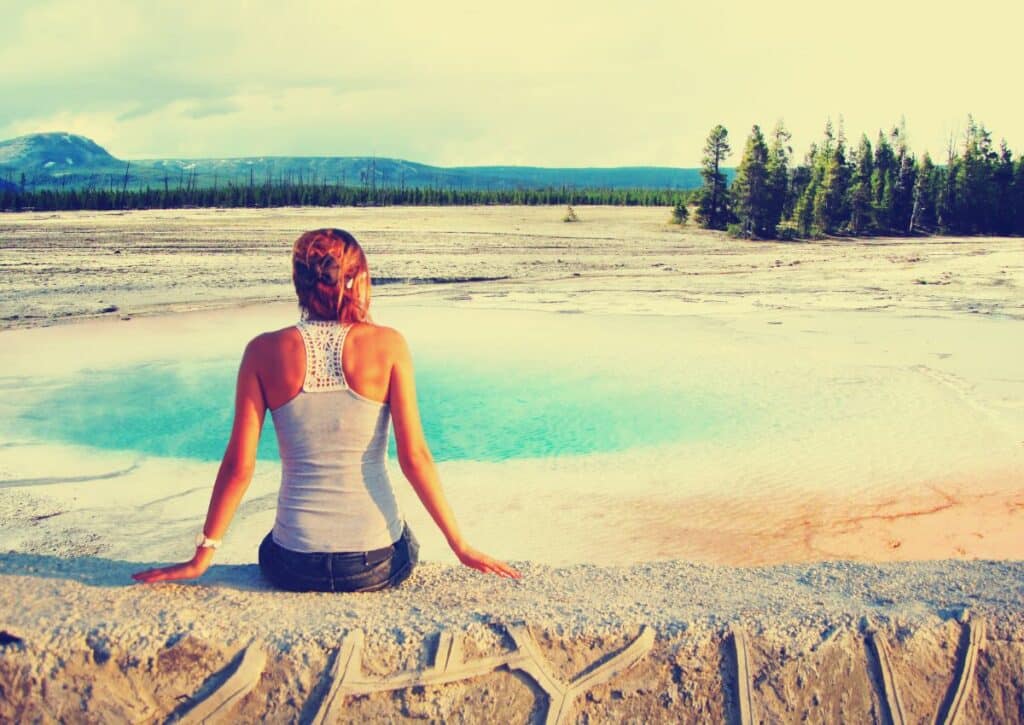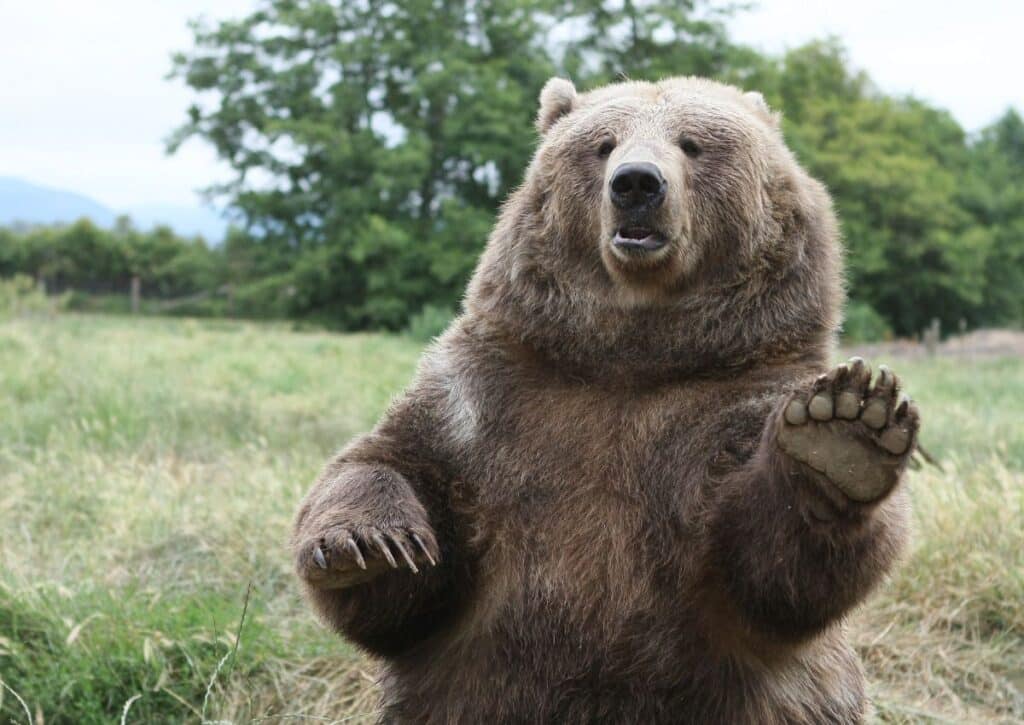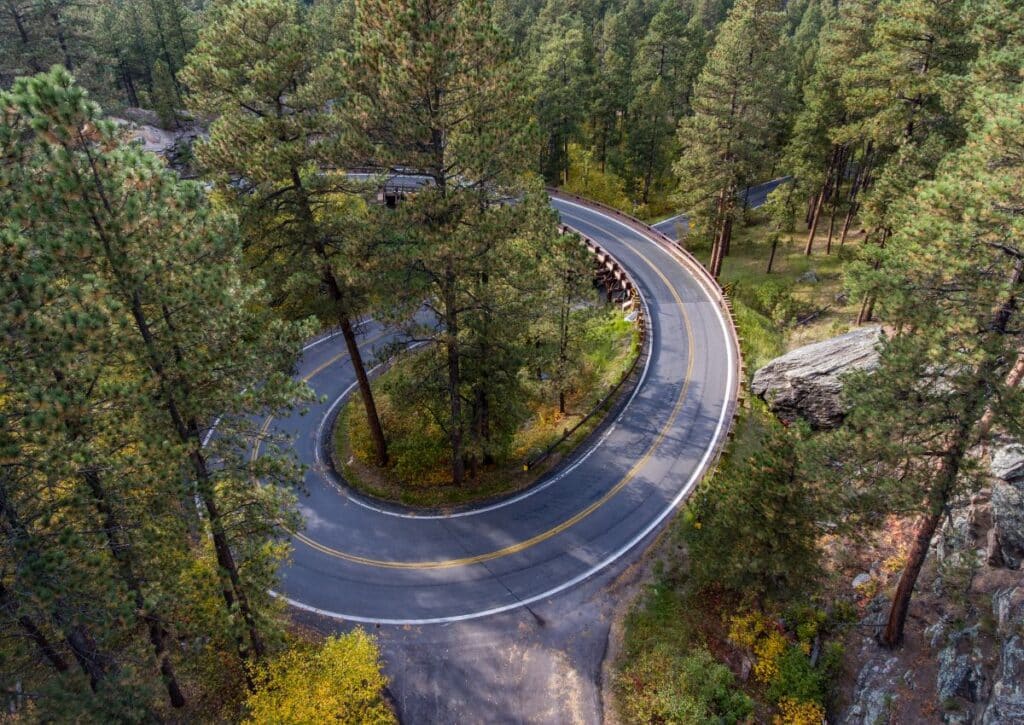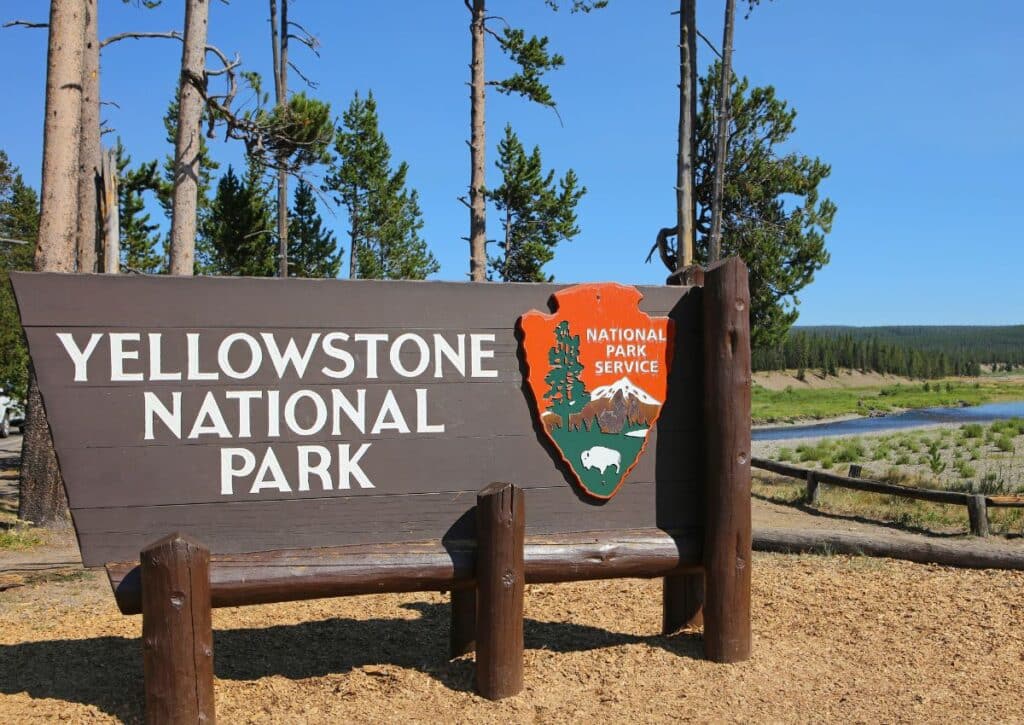Determining the best time to visit Yellowstone? Explore seasonal highlights, from spring renewal to winter wonder, with a special nod to the allure of fall.
Yellowstone National Park is a vast expanse of natural beauty, known for its geysers, forests, and diverse wildlife. If you’re planning a trip, the question of when to go can be pivotal.
Each season in Yellowstone offers its unique experiences and challenges. Some travelers may prefer the winter’s quiet solitude, while others might be drawn to the abundant wildlife activities of the summer.
Our article breaks down what you can expect in each season, helping you decide the best time for your visit.
Whether you’re an avid hiker, a wildlife enthusiast, or just looking for a memorable getaway, this guide is tailored to assist you in making an informed choice. Dive in to discover the seasonal wonders of Yellowstone.
The Short Answer: Why Fall Might Just Be the Perfect Season
Visiting Yellowstone in the fall can feel like you’ve uncovered a well-kept secret. While many may flock to the park during the peak summer months, the autumn months present a series of advantages for the discerning traveler.
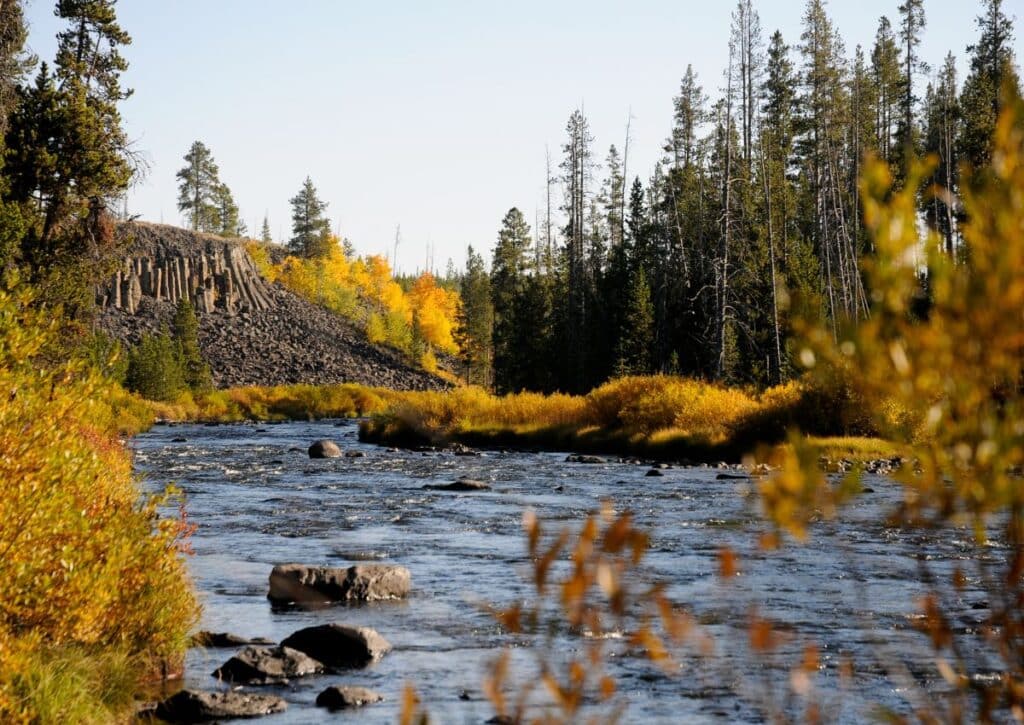
Ideal Weather Conditions: Fall in Yellowstone boasts moderate temperatures, often hovering between 30 to 60 degrees Fahrenheit.
The scorching summer heat tapers off, and the icy bite of winter is yet to set in. This creates an ideal environment for hiking and exploring, without the need for constant layering or concern about heat exhaustion.
Fewer Insects: Summer can be notorious for pesky mosquitoes and flies. Come fall, these nuisances reduce dramatically, making your outings less about swatting bugs and more about soaking in the views.
Lower Tourist Traffic: With schools back in session and the peak travel season winding down, Yellowstone in the fall witnesses fewer tourists.
This means less time waiting in lines, more space at popular viewing spots, and a generally more peaceful experience.
Active Wildlife: As animals prepare for the winter, the park comes alive with activity. A major highlight is the elk rut in September, where these majestic creatures can be heard bugling and seen engaging in mating displays.
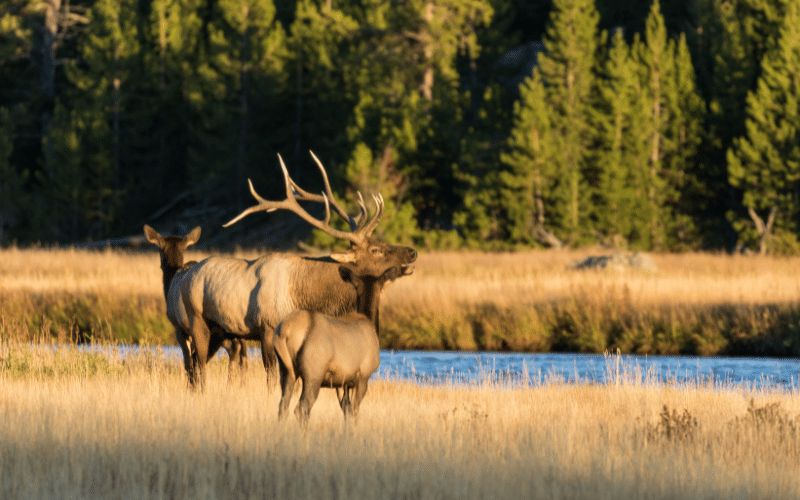
It’s a natural spectacle that resonates with the wild heart of Yellowstone.
Fall Colors: The park transforms into a canvas of golds, ambers, and reds. Aspen, cottonwood, and willow trees all change hues, creating a contrasting backdrop against the evergreen conifers.
However, it’s essential to keep in mind the unique challenges of the season. As fall progresses, some attractions and accommodations may begin to shut down in preparation for winter.
The weather, though generally pleasant, can be unpredictable, with the chance of an unexpected snowstorm always looming.
But for many, these minor unpredictabilities are a small price to pay for the unparalleled beauty and serenity that fall in Yellowstone has to offer.
Yellowstone Through the Seasons
Yellowstone National Park is a dynamic and ever-evolving landscape, with each season bringing its own set of marvels and challenges.
From snow-covered vistas to vibrant meadows, the park offers distinct experiences throughout the year.
Let’s delve into the unique characteristics and offerings of each season to guide your travel plans.
Spring in Yellowstone: A Symphony of Renewal
Spring is a time of rebirth and rejuvenation in Yellowstone National Park.
As the snow begins to melt, the park transitions from a winter wonderland to a vibrant landscape, alive with color, sound, and movement.
If you’re contemplating a visit during this season, here’s a deep dive into what awaits you.
Wildlife
Newborn Animals: Spring is synonymous with the arrival of new life. As you traverse the park, you might be lucky enough to spot bison calves with their characteristic reddish-brown coats or pronghorn fawns taking their first steps in the vast meadows.
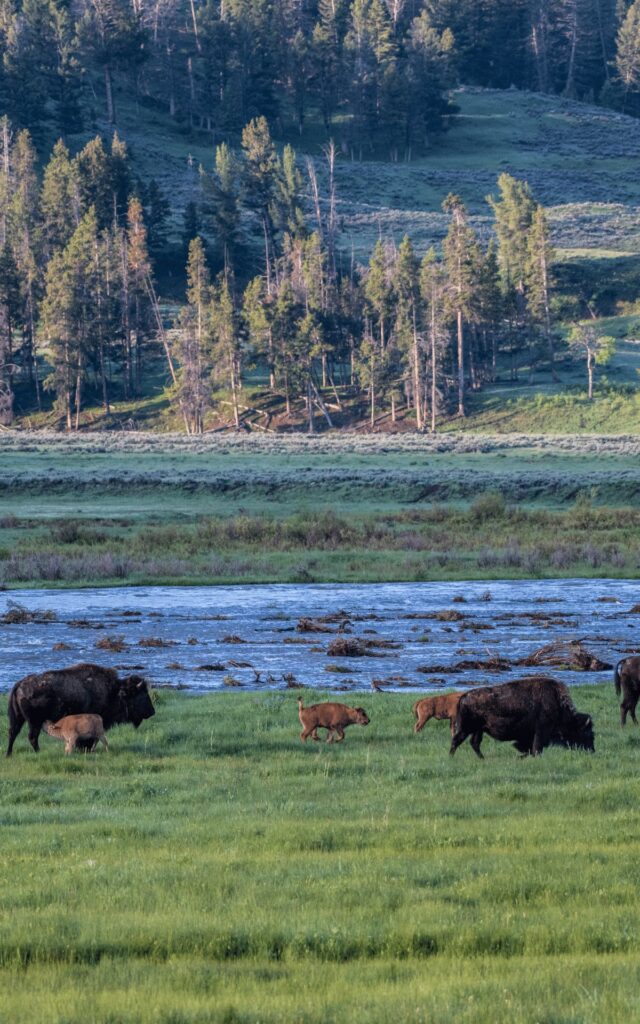
These scenes of young wildlife are not only endearing but also represent the continuation of life cycles in this wild ecosystem.
Bear Sightings: One of the most exhilarating wildlife experiences in Yellowstone during spring is the emergence of bears from hibernation.
Both grizzly and black bears become more active, often seen foraging in the lower elevations.
The Tower-Roosevelt area and the east entrance road leading up to Sylvan Pass are among the popular spots for bear sightings.
But always maintain a safe distance and use binoculars or spotting scopes for viewing.
Activities:
First Opening of Some Roads: Not all roads in Yellowstone are accessible throughout the year.
However, come April, routes like the West Entrance to Madison, Mammoth Hot Springs to Old Faithful, and Norris to Canyon Village start to open, granting visitors access to some of the park’s iconic landmarks.
Ranger Programs: As the park gears up for the tourist season, ranger-led programs make a comeback.
These sessions, often held at the Mammoth Hot Springs Visitor Center, grant insights into the park’s history, geology, and ecology, making them both informative and entertaining.
Hiking
Melting Snow and Wet Trails: The receding snow uncovers trails that were previously inaccessible during winter.
Trails like the Mystic Falls near Biscuit Basin and the Upper Terrace Loop at Mammoth Hot Springs are popular choices. However, it’s crucial to be cautious.
The melting snow can lead to wet and slippery conditions.
It’s advisable to wear waterproof boots and always check the trail conditions at visitor centers before embarking on a hike.
Freshness of New Blooms: Yellowstone in spring is a botanical wonder.
Wildflowers like the Shooting Star, Glacier Lily, and the Arrowleaf Balsamroot begin to bloom, carpeting meadows in a riot of colors.
The Hellroaring Creek trail is particularly known for its wildflower displays and offers a delightful hiking experience.
Challenges
Changing Weather: Spring weather in Yellowstone can be a mixed bag. While daytime temperatures can be mild, evenings often remain cold.
Moreover, spring storms can bring snow even in May. It’s essential to be prepared with layered clothing and regularly check weather forecasts.
Potential Flooding: With the melting snow, rivers and streams within the park can overflow. This might lead to some trails being temporarily closed.
The Lamar Valley, a favorite for wildlife watchers, can especially see higher water levels. Always heed warnings and avoid areas marked as flooded.
Regions to Consider in Spring
Lamar Valley: Often termed as America’s Serengeti, the Lamar Valley is a hotspot for wildlife enthusiasts.
Spring brings with it increased animal activity, making it a prime location for watching wolves, bison, and even the occasional mountain lion.
Madison River Valley: With its proximity to the West Entrance, the Madison River Valley is easily accessible and offers chances to see bison, elk, and moose in the spring months.
Crowd Levels: Spring, especially the early months, is a shoulder season in Yellowstone. This means fewer tourists, which can lead to a more serene and intimate park experience.
Popular spots like the Grand Prismatic Spring and the Grand Canyon of the Yellowstone see fewer crowds, making it an ideal time for photography and peaceful contemplation.
Camping:
Many of Yellowstone’s campgrounds start to open in the spring, with sites at Mammoth Hot Springs and the Norris Campground being among the first.
Given the reduced crowd levels, securing a spot becomes easier, though reservations are always recommended.
If you’re looking to camp in a more secluded setting, the Slough Creek Campground, located in the park’s northeast, is a hidden gem, especially for those keen on wildlife watching.
Spring in Yellowstone is an experience marked by contrasts – from the lingering snow patches to the vibrant blossoms, from young calves frolicking in the meadows to the majestic bears awakening from their slumber.
While the challenges of the season are undeniable, the rewards, in terms of wildlife sightings, fewer crowds, and the sheer beauty of a park in bloom, are unparalleled.
If you’re seeking an immersive experience of nature’s renewal, spring in Yellowstone awaits you.
Summer in Yellowstone: Basking in Nature’s Prime
Yellowstone in summer is nature’s stage set for a grand performance.
The verdant landscape, vibrant wildlife, and endless activities make it the most popular season for visitors.
As the mercury rises, the park unveils a plethora of experiences waiting to be explored.
Wildlife
Active and Visible Wildlife: The warmer months see Yellowstone’s fauna in full swing.
Bison: These iconic symbols of the American West are often spotted roaming the grassy plains in large herds, particularly in the Lamar and Hayden Valleys.
During July and August, bison mating season, or the rut, is in full force, where males can be heard bellowing and seen sparring.
Elk: Another summer highlight is watching elk graze in meadows, especially during dawn and dusk. Look out for them around the Mammoth Hot Springs and the Madison River.
Bird Species: Summer is a birder’s delight. With over 300 species calling Yellowstone home, opportunities are abundant.
Peregrine falcons can be spotted around the Grand Canyon of the Yellowstone, while trumpeter swans grace the park’s waters, particularly at the Yellowstone River and Swan Lake.
Activities
Fishing: Yellowstone’s pristine waters, teeming with cutthroat trout, beckon anglers from all over.
While many rivers and lakes are open for fishing, the Yellowstone River, especially around the Hayden Valley, and Slough Creek are prime spots. Remember, a Yellowstone National Park fishing permit is required.
Boating: Whether you’re kayaking, canoeing, or motor boating, Yellowstone’s lakes provide the perfect setting.
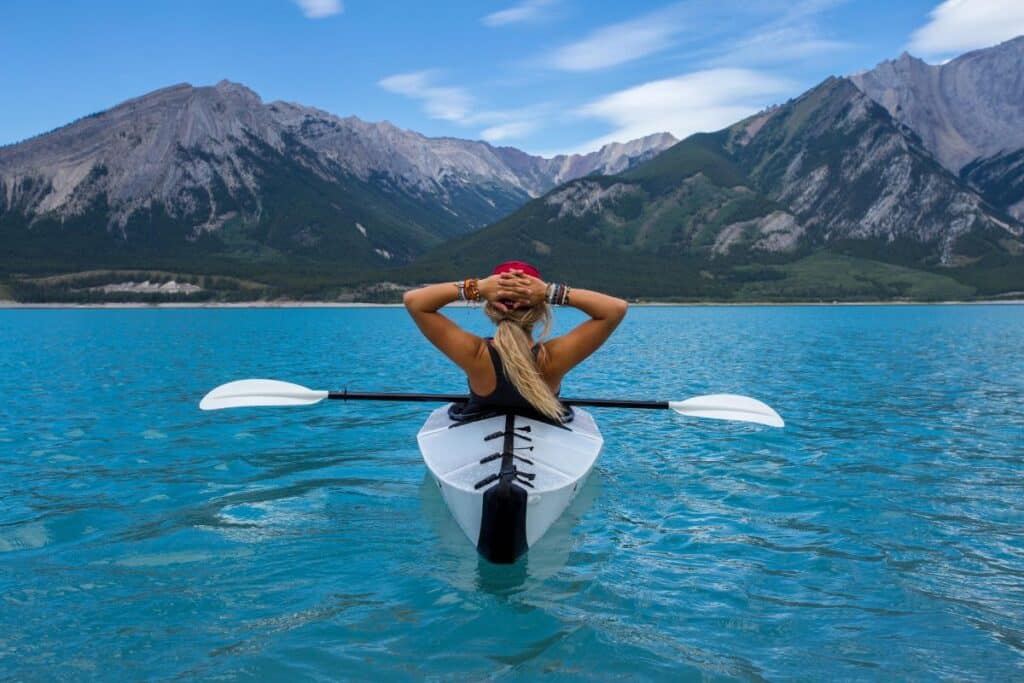
Yellowstone Lake, the largest high-altitude lake in North America, is especially popular.
Renting boats at Bridge Bay Marina and setting off to explore the vast waters can be a summer highlight.
Ranger-led Programs: The ranger programs, which are educational and interactive, peak in summer.
Whether it’s a guided walk, a wildlife talk, or a star-gazing session, the park’s rangers offer a deeper understanding of Yellowstone’s intricate ecosystems.
The Canyon Visitor Education Center often has a packed schedule of these programs.
Hiking
All Trails Accessible: The snow having fully melted means that Yellowstone’s 900+ miles of trails are ready for exploration.
Alpine Meadows in Full Bloom: One of the summer’s hiking highlights is witnessing the alpine meadows bursting with wildflowers.
Trails like the Mount Washburn and the Fairy Falls Trail showcase this floral extravaganza.
Popular Trails: For panoramic vistas, the Sky Rim Trail is unmatched.
If you’re after a shorter yet rewarding hike, the trail to Inspiration Point offers breathtaking views of the Grand Canyon of the Yellowstone.
Challenges
Crowds: Yellowstone’s allure in summer is undeniable, making July and August particularly busy.
Popular spots like Old Faithful and the Grand Prismatic Spring can get crowded. It’s advisable to start early in the day or opt for less-trodden paths to avoid the throngs.
Higher Chances of Forest Fires: With the heat, the park becomes more susceptible to wildfires.
While natural fires are a part of the ecosystem’s regeneration process, it’s vital for visitors to follow park guidelines strictly to prevent human-caused fires.
Regions to Consider in Summer
The Geyser Basins: A trip to Yellowstone in summer would be incomplete without witnessing the geothermal wonders. The Upper, Middle, and Lower Geyser Basins are must-visits, with geysers, hot springs, and fumaroles on display.
Tower Fall: Situated near the Tower-Roosevelt area, this 132-foot waterfall is a cooling sight amidst the summer heat and a popular spot for picnics.
Crowd Levels: Summer, being the peak season, sees the highest number of visitors.
While this brings a certain vibrancy and buzz to the park, those seeking solitude might find some areas too crowded.
The North and Northeast entrances typically see fewer visitors, providing a slightly more peaceful experience.
Camping
With the park being in full summer swing, all campgrounds are operational. However, spots can fill up quickly.
The Pebble Creek Campground, located in the park’s northeast, provides proximity to the Lamar Valley, making wildlife watching a dawn or dusk activity right from your tent.
For those seeking amenities, the Grant Village Campground, close to Yellowstone Lake, is equipped with showers and a laundromat.
Fall in Yellowstone: A Mesmerizing Transition
As the fervor of summer wanes, Yellowstone embraces fall with a serene elegance. This season is painted with a pallet of golds, oranges, and reds, transforming the park into an artist’s dream.
But beyond the visual spectacle, fall is a period of profound ecological transition, where wildlife activity is heightened and the ambiance of the park takes a more tranquil turn.
Wildlife
Elk Rut: The signature event of Yellowstone in fall is the elk rut, or mating season. The sound of bugling male elk echoes through the valleys, a haunting and unmistakable call.
Bulls engage in fierce battles, locking antlers and jostling for dominance and the right to mate.
The meadows around the Mammoth Hot Springs and the areas near Canyon Village offer prime viewing opportunities.
Animals Preparing for Winter: Fall is a period of preparation for the park’s residents. Bison can be seen grazing extensively, building fat reserves for the harsh winter.
Bears, especially grizzlies, are particularly active, foraging almost ceaselessly as they ready for hibernation.
The Lamar and Hayden Valleys become hotspots for observing these creatures in their pre-winter hustle.
Activities
Last Chance for Guided Tours: As the park prepares for winter, many guided tours wrap up their season.
Fall visitors can catch the tail-end of these experiences, from horseback rides near Roosevelt Lodge to boat tours on Yellowstone Lake.
It’s an opportune time to gain insights from experienced guides amidst the backdrop of autumn hues.
Enjoying the Autumn Scenery: Beyond structured activities, simply driving through the park is a visual treat.
The Dunraven Pass route, in particular, offers panoramic vistas of the changing foliage, especially the brilliant golds of the aspen and cottonwood trees.
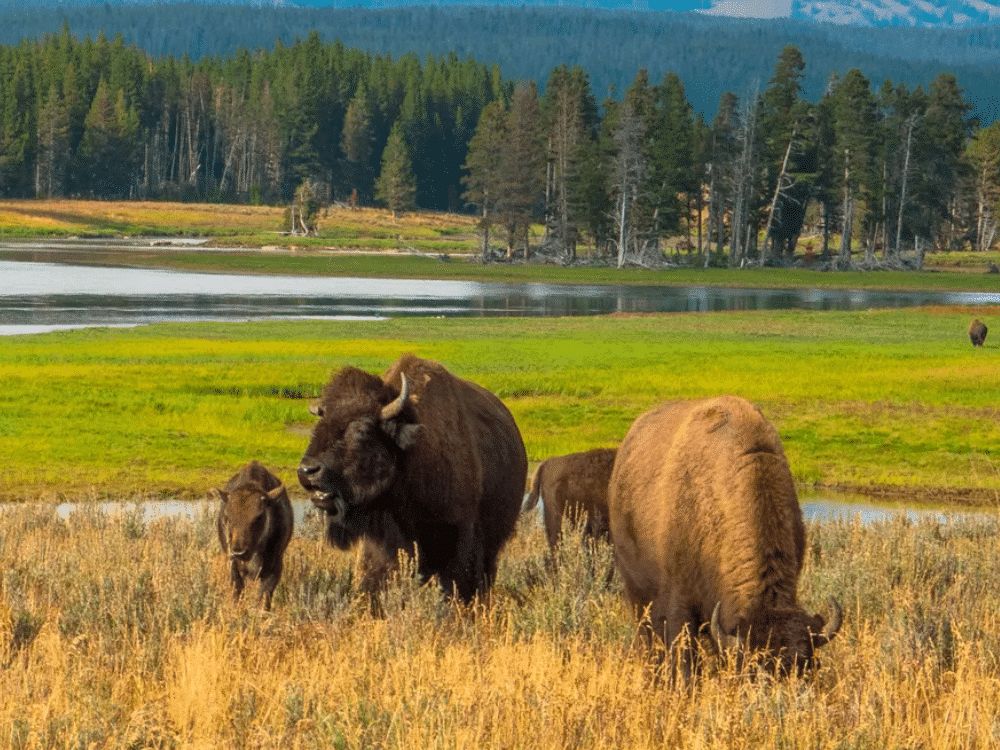
Hiking
Experiencing the Foliage Change: Hiking in Yellowstone during fall is a sensory pleasure.
The crunch of leaves underfoot, the scent of pine in the crisp air, and the visual tapestry of colors make every trail special.
The Cascade Lake Trail near Canyon Village is a moderate hike that showcases the park’s autumnal beauty exceptionally well.
Cooler Temperatures: The sweltering heat of summer gives way to cooler, more comfortable hiking conditions.
However, it’s essential to be prepared with layers as mornings can be chilly, and temperatures can drop rapidly towards the evening.
Challenges
Limited Operations: As winter approaches, many facilities start winding down.
Lodges like the Roosevelt Lodge close post Labor Day, and many restaurants and shops operate with reduced hours. It’s essential to plan accommodations and provisions accordingly.
Unpredictable Weather: Fall in Yellowstone can be a meteorological wild card.
While days can be warm and sunny, snow can make an early appearance, especially in higher elevations. Keeping an eye on weather forecasts and having flexible plans can be crucial.
Regions to Consider in Fall
The Norris Geyser Basin: With its geothermal features framed by the colors of fall, this area is particularly enchanting.
The contrast of steaming hot springs against the cool fall air creates a mystical ambiance.
Madison River Area: A favorite among wildlife enthusiasts, this region, with its open landscapes, provides excellent opportunities to observe the elk rut and other wildlife gearing up for winter.
Crowd Levels
One of the understated benefits of visiting Yellowstone in the fall is the reduced crowd levels.
The post-summer tranquility means popular spots like the Old Faithful are less crowded, and roadways are less congested.
It’s a season that offers a more intimate experience with nature.
Camping
Though some campgrounds start closing in early September, several remain open and are perfect for the fall visitor.
The Madison Campground, given its proximity to prime elk rut viewing areas, is particularly popular.
The Slough Creek Campground, with its remote setting, offers a serene fall camping experience, perfect for those looking to truly immerse themselves in Yellowstone’s autumn allure.
Highlights
Fall in Yellowstone is an ephemeral delight, a brief but mesmerizing period that bridges the vitality of summer and the stillness of winter.
It’s a season of sounds, from the rustling of dried leaves to the bugling of elk.
For the discerning traveler, keen on witnessing Yellowstone in a unique light, where nature is both in transition and in celebration, a fall journey promises memories that linger long after the colors have faded.
Winter in Yellowstone: A Snow-Covered Wonderland
When winter’s embrace blankets Yellowstone, it transforms the park into a realm of ethereal beauty.
Gone are the summer crowds, replaced with a serenity only interrupted by the occasional puffing of bison in the snow or the distant howl of a wolf.
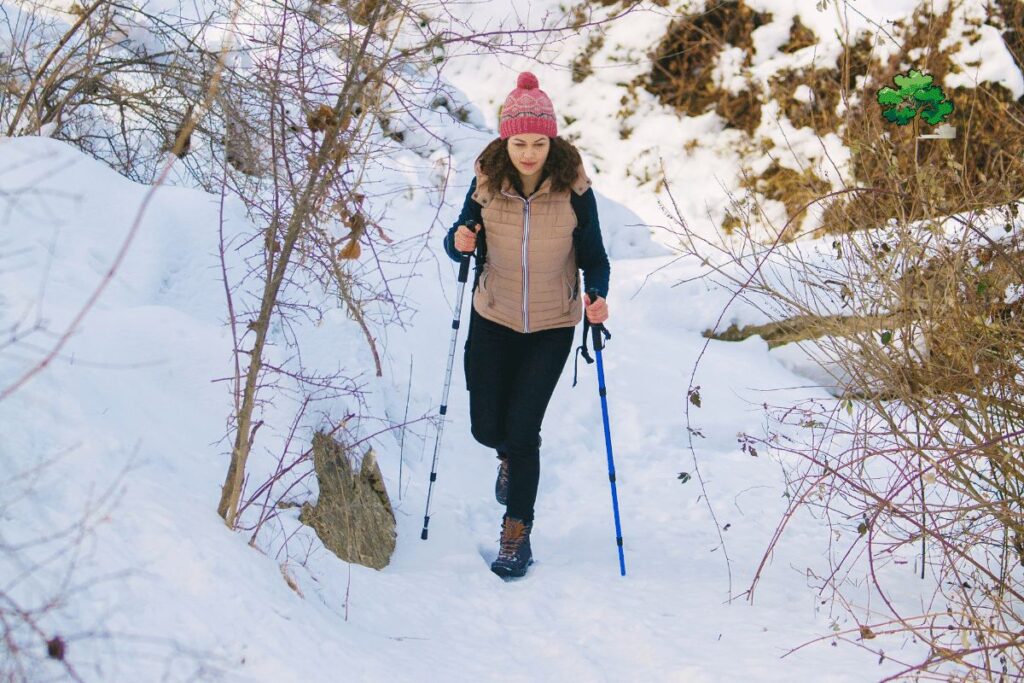
This season is for the hearty adventurer, a time when nature’s raw force and beauty are on full display.
Wildlife
Bison in the Snow: Perhaps no image is as emblematic of Yellowstone in winter as that of a bison, steam rising from its nostrils, plowing through the deep snow.
These majestic beasts have an incredible ability to use their heads like snowplows, pushing away snow to reach the grasses beneath.
The Upper and Lower Geyser Basins are prime locations to witness these animals in their winter habitat.
Winter Migrations: As snow blankets the higher terrains, many animals move to lower elevations in search of food.
The Northern Range, particularly the Lamar Valley, becomes the wintering ground for numerous species, from herds of elk to pronghorn.
Braving the Cold: Alongside bison, other animals like coyotes, wolves, and bald eagles can be spotted during the colder months.
Their winter behaviors, from hunting in packs to soaring above frozen rivers, offer unique wildlife-watching opportunities.
Activities
Snowmobiling: Winter in Yellowstone allows for an exhilarating snowmobile experience.
Authorized guided tours navigate through a winter wonderland, stopping at iconic landmarks like Old Faithful.
Popular routes include the South Entrance to Grant Village and the West Entrance to Madison Junction. Always ensure you’re using a ‘Best Available Technology’ snowmobile to reduce environmental impact.
Cross-Country Skiing: Glide silently through Yellowstone’s snow-covered landscapes on cross-country skis. The park offers a range of trails, from beginner to advanced.
A favorite is the Riverside Trail, which winds alongside the Madison River, while the Blacktail Plateau Drive offers more challenging terrains with potential wildlife sightings.
Guided Snowshoe Hikes: For those new to winter activities in Yellowstone, joining a ranger-led snowshoe hike can be an informative and enriching experience.
These hikes delve into the park’s winter ecology and are usually available from the West Entrance or Mammoth Hot Springs.
Hiking
Fewer Accessible Trails: Many of Yellowstone’s trails become inaccessible due to deep snow, but this doesn’t deter the determined hiker.
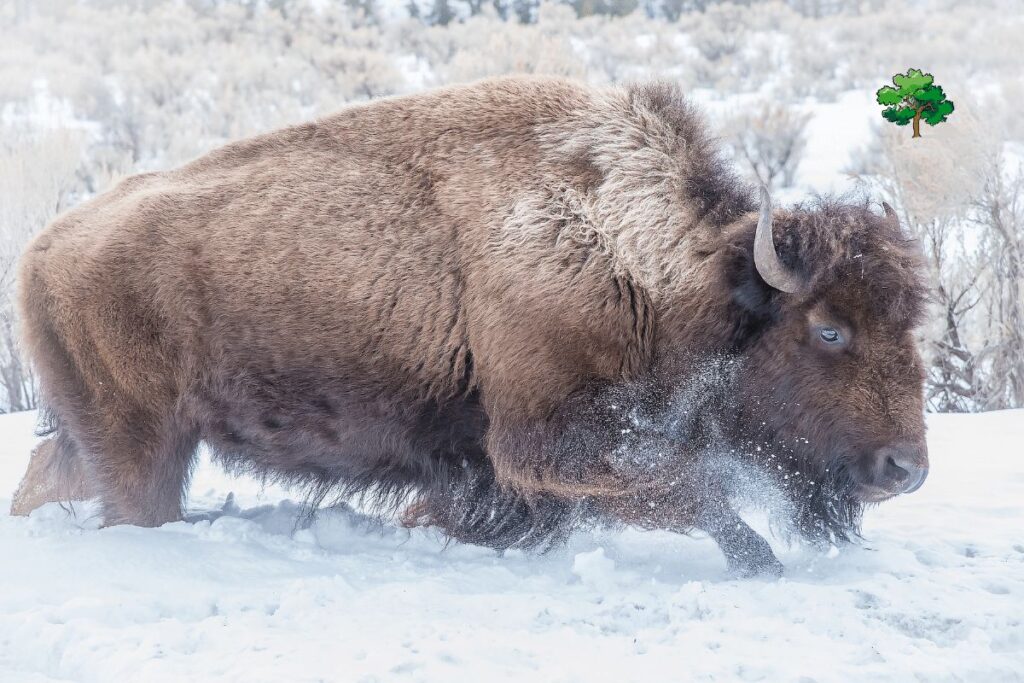
With the right gear, a winter hike offers unparalleled views of the park’s snow-covered landscapes.
Enchanting Snowy Landscape: Trails near the Northern Range, given its lower elevation, are more accessible.
The Bighorn Loop, for instance, provides sweeping views of the snow-clad Lamar Valley and potential wildlife encounters.
Challenges
Limited Accessibility: During winter, most of Yellowstone’s roads are closed to regular vehicles, making snowmobiles or snowcoaches the primary modes of transport.
Only the road from the North Entrance at Gardiner to the Northeast Entrance at Cooke City remains open to cars.
Extreme Cold: Winter in Yellowstone is not for the faint-hearted. Temperatures can plummet well below freezing, with chilly winds adding to the cold’s bite.
Proper winter gear, including thermal layers, insulated boots, and high-quality gloves, is essential.
Regions to Consider in Winter
The Thermal Areas: Winter accentuates the beauty of Yellowstone’s geothermal features.
The contrast between the cold air and the hot springs, geysers, and fumaroles is mesmerizing.
The Norris Geyser Basin, with its boiling springs framed against a backdrop of snow, is a must-visit.
Tower Fall: While the fall might be partly frozen, the surrounding snow-covered landscape adds to its allure, making it a scenic spot for winter photography.
Crowd Levels
Winter sees Yellowstone in one of its most peaceful states. The drop in temperatures corresponds with a drop in visitor numbers, offering solitude and tranquility.
Places that bustled in summer, like the Grand Canyon of the Yellowstone, take on a hushed beauty.
Camping
While most of Yellowstone’s campgrounds are closed in winter, there are a few options for the winter-hardy camper.
The Mammoth Campground, near Mammoth Hot Springs, remains open year-round and offers a base for exploring the Northern Range.
Ensure you’re well-prepared with winter camping gear and supplies.
Remember
Yellowstone in winter is a surreal experience, a far cry from its summer persona. It’s a season that demands respect — for nature’s might and for the wildlife that endures the harsh conditions.
But for those who venture into its snowy expanses, the rewards are unparalleled: a Yellowstone that’s pristine, serene, and brimming with winter wonders.
Also Read
30+ Best Things to Do in Yellowstone National Park (All-Inclusive Guides Trips!)
18 Hikes in Yellowstone National Park for a Serene Adventure
Kayaking in Yellowstone National Park: A Thrilling Adventure
7-Day Guided Yellowstone Hiking Tour Experience: A Review!
17 Favorite Hot Springs of Yellowstone National Park: A Comprehensive Guide!
Conclusion: A Year-Round Yellowstone Reverie
Yellowstone, with its sprawling landscapes and teeming wildlife, is a testament to nature’s grandeur, presenting a different face with each passing season.
Spring paints the park with fresh blooms and heralds the birth of new life, while summer amplifies its vibrancy, buzzing with activity and inviting a plethora of outdoor endeavors.
Autumn, my personal favorite, swathes Yellowstone in a rich tapestry of russet and gold, offering a serenity that’s both heartwarming and reflective.
Winter, the stark contrast, is a realm of ethereal beauty, where the land, blanketed in snow, radiates a silent yet powerful allure.
While the colors and charms of fall resonate deeply with me, the true beauty of Yellowstone lies in its capacity to cater to varied tastes. It beckons travelers to find their own cherished season, one that aligns with their interests, passions, and endurance levels.
Some may relish the warmth and vibrancy of summer, while others might be drawn to the calm, crystalline beauty of winter. Ultimately, it’s a deeply personal journey of discovery.
However, amidst this journey, it’s paramount to remember our role as stewards of nature. Yellowstone, in all its seasonal splendor, is a precious ecosystem, deserving of our utmost respect.
Whether you’re marveling at the geysers in spring, fishing in summer, trekking amidst fall foliage, or skiing through winter’s embrace, it’s our collective responsibility to ensure that we tread lightly, preserving its innate beauty for generations to come.
In the grand mosaic of Yellowstone’s seasons, each tile is distinct yet interconnected, creating a masterpiece that’s both timeless and ever-evolving.
And as you chart your course through this natural wonder, may you find not just a favorite season, but countless moments of awe and reverence.

